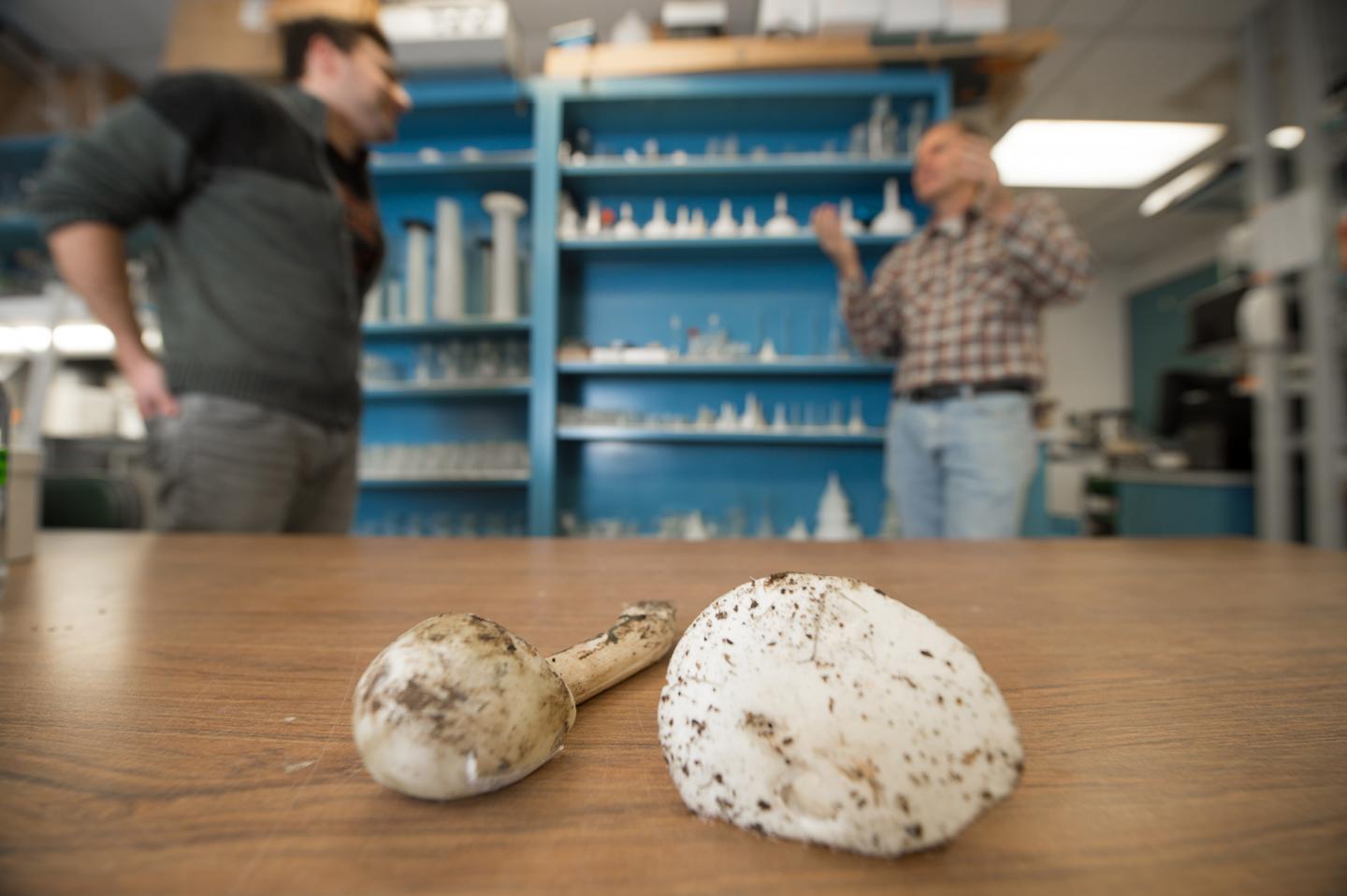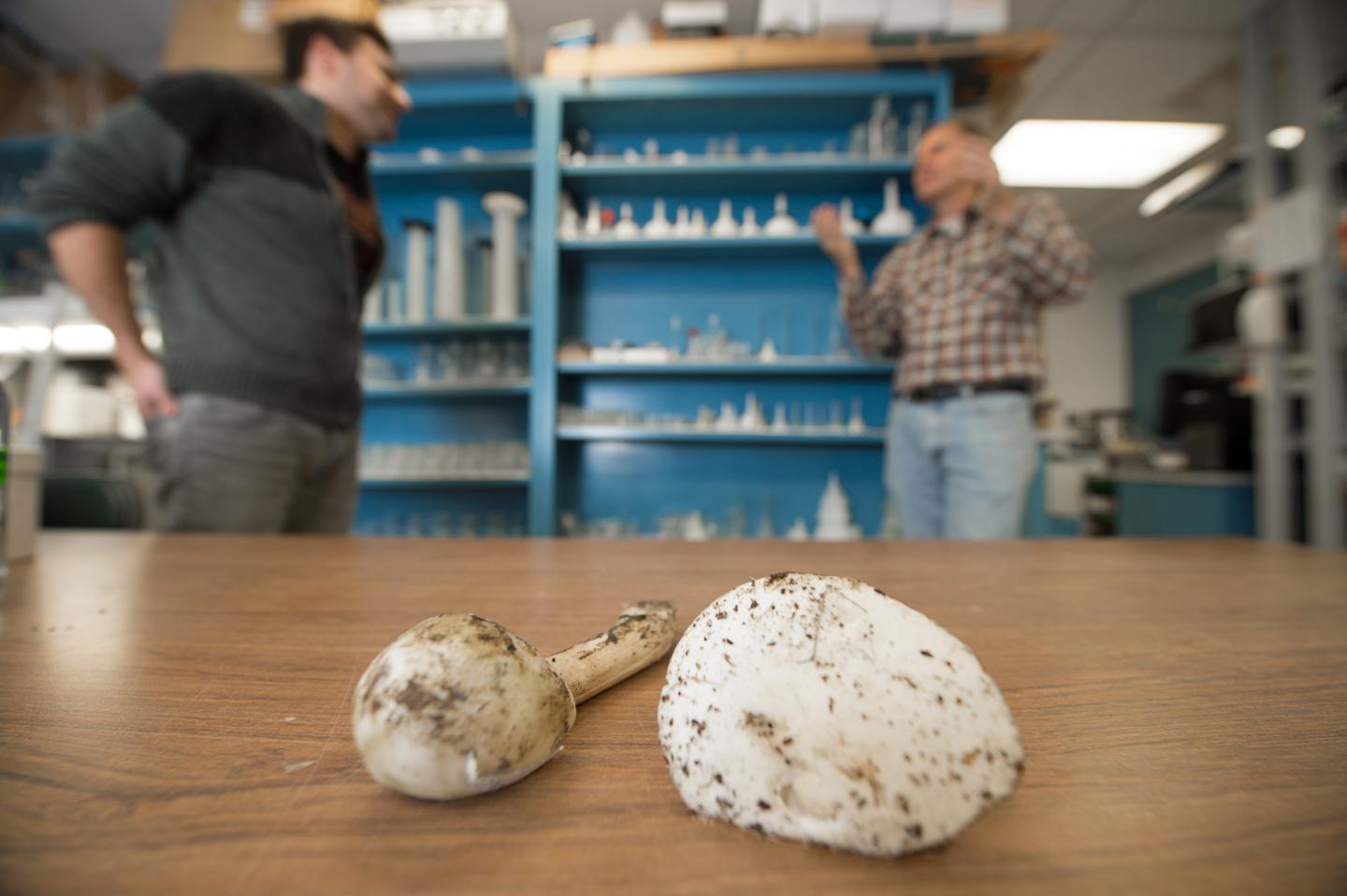
Credit: By G.L. Kohuth
EAST LANSING, Mich. – A team of Michigan State University scientists has genetically sequenced two species of poisonous mushrooms, discovering that they can theoretically produce billions of compounds through one molecular assembly line. This may open the door to efficiently tackling some lethal diseases.
The study, published in the journal BMC Genomics, reveals the DNA of two Amanita mushrooms, which are responsible for the majority of fatal mushroom poisonings.
The team will focus on the "Death Cap," which grows all over the West Coast and Europe, and the "Destroying Angel," native to Michigan.
"We actually did a partial DNA sequence of the two mushrooms 10 years ago," said Jonathan Walton, professor at the MSU-DOE Plant Research Laboratory and co-lead author. "As sequencing has gotten faster and cheaper, we were able to complete the project recently."
As Walton expected, the data revealed the genes responsible for producing several of the known harmful poisons, which come in the form of small, ring-shaped molecules called cyclic peptides.
"Because cyclic peptides lack any free ends, it is hard for our bodies to latch on to them in order to digest them or to repel them," Walton said. "So the peptides enter our blood streams and target our cells very easily, very precisely."
To their surprise, Walton and colleagues found mushrooms have the potential to synthesize many more cyclic peptides than previously known, potentially in the billions, through one molecular production platform. The researchers have already discovered three previously unknown cyclic peptides based on patterns in the newly discovered DNA sequence.
Walton can already picture using cyclic peptides' laser-like ability to penetrate human cells for medicinal uses, noting that only a few mushroom peptides are poisonous to people.
"Imagine you have 10 different Lego bricks," Walton said.
"There are so many ways you can put them together. Cyclic peptides are assembled just like Legos, each one made of 8-10 out of a total of 20 possible amino acids. If you scramble these components, you can synthesize a huge number of these molecules in the lab through that one molecular platform."
Until now, however, the only studies done with this type of mushroom extracts have looked for conditions that kill mammals.
"Yet, many cyclic peptides are already known to be important drugs against tuberculosis, drug-resistant Staphylococcus and cancer. By harnessing the Amanita system, we can imagine a less crude and potentially more effective way to synthesize a large pool of new compounds, which we can test for potential pharmaceutical uses."
###
Fellow MSU scientists Jane Pulman, Kevin Childs and R. Michael Sgambelluri contributed to the paper.
Michigan State University has been working to advance the common good in uncommon ways for more than 150 years. One of the top research universities in the world, MSU focuses its vast resources on creating solutions to some of the world's most pressing challenges, while providing life-changing opportunities to a diverse and inclusive academic community through more than 200 programs of study in 17 degree-granting colleges.
For MSU news on the Web, go to MSUToday. Follow MSU News on Twitter at twitter.com/MSUnews.
Media Contact
Layne Cameron
[email protected]
517-353-8819
@MSUnews
http://msutoday.msu.edu/journalists/





